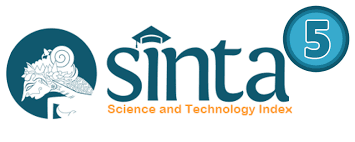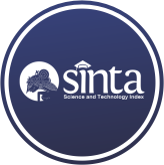Prediksi Ekspor Minyak Bumi Mentah di Indonesia dengan Algoritma Resilient Backpropagation
(1) STIKOM Tunas Bangsa, Pematangsiantar, Indonesia
(2) STIKOM Tunas Bangsa, Pematangsiantar, Indonesia
(*) Corresponding Author
Abstract
Indonesia is the largest producer of crude oil by country and main destination. The need for world crude oil currently tends to increase significantly, this is also the basis for import activities in Indonesia in line with the increase, of course all of this is due to the increase in the amount of oil consumption from within the country, this makes crude oil exports in Indonesia by country the main goal is to experience instability and even tend to decrease. Therefore a prediction is needed to find out the amount of crude oil exports in Indonesia in the future and later this prediction is useful for the government to increase the amount of crude oil exports in Indonesia. The data used in this study is data on the amount of crude oil exports in Indonesia taken from the Central Bureau of Statistics from 2014 to 2020. The algorithm used to make predictions is a Resilient Backpropagation neural network. There are five architectural modeling used in this prediction, namely, 5-9-1 has an accuracy rate of 43%, 5-10-1 has an accuracy rate of 71%, 5-11-1=56%, 5-12-1=86% , and 5-13-1 at 71%. The best architecture of the five models is 5-12-1 where the architecture has an accuracy of up to 86% and an MSE of 0.000995. So this architectural model is good enough to be used to predict the amount of crude oil exports in Indonesia.
Full Text:
PDFReferences
H. K. Yazid Fahrizal, Aris Soelistyo, “Analisis Penawaran Ekspor Minyak Bumi Mentah Indonesia Pada Pasar Global Tahun 2009-2018,” Ilmu Ekon., vol. Vol. 4, no. 3, p. 3, 2020, [Online]. Available: https://ejournal.umm.ac.id/index.php/jie/article/view/12757
M. H. S. Hodijah, “Pengaruh Ekspor dan Impor Minyak Bumi terhadap Pertumbuhan Ekonomi Indonesia,” vol. 3, pp. 107–118, 2015.
R. E. Pranata, I. Gunawan, and Sumarno, “Algoritma Backpropagation Dalam Melakukan Estimasi Penjualan Beras Pada CV Hariara Pematangsiantar,” J. Comput. Syst. Informatics, vol. 2, no. 2, pp. 210–221, 2021.
D. Marpaung, S. Sumarno, and I. Gunawan, “Prediksi Produktivitas Kelapa Sawit di PTPN IV dengan Algoritma Backpropagation,” KLIK Kaji. Ilm. Inform. Komput., vol. 1, no. 2, pp. 12–16, 2020.
H. Okprana, M. R. Lubis, and J. T. Hadinata, “Prediksi Kelulusan TOEFL Menggunakan Metode Resilient Backpropagation,” J. Edukasi dan Penelit. Inform., vol. 6, no. 2, p. 275, 2020, doi: 10.26418/jp.v6i2.41224.
B. Supranda, Solikhun, and Z. A. Siregar, “Penerapan Jaringan Syaraf Tiruan Backpropagation Dalam Memprediksi Jumlah Pertumbuhan Kendaraan Di Provinsi Sumatera Utara,” vol. 2, no. 4, pp. 152–160, 2022.
F. Mulianingsih, K. Anwar, F. A. Shintasiwi, and A. J. Rahma, “Artificial Intellegence dengan Pembentukan Nilai dan Karakter di Bidang Pendidikan,” vol. 4, no. 2, 2020.
O. A. Putri, Poningsih, and H. S. Tambunan, “Prediksi Kunjungan Wisatawan Mancanegara Ke Indonesia Menggunakan Jaringan Saraf Tiruan Dengan Algoritma Backpropagation,” KESATRIA J. Penerapan Sist. Inf. (Komputer Manajemen), vol. 2, no. 1, pp. 1–7, 2021, [Online]. Available: http://tunasbangsa.ac.id/pkm/index.php/kesatria/article/view/51
DOI: https://doi.org/10.30645/brahmana.v4i1A.157
DOI (PDF): https://doi.org/10.30645/brahmana.v4i1A.157.g156
Refbacks
- There are currently no refbacks.
Published Papers Indexed/Abstracted By:















